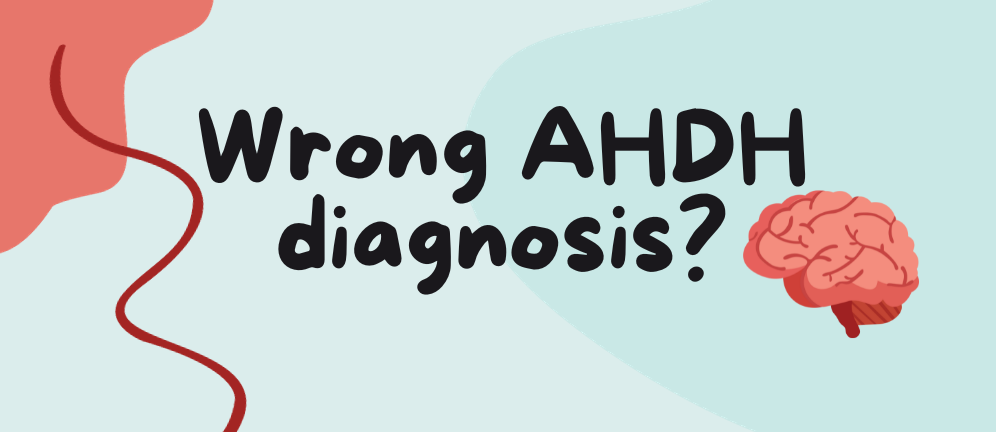Can ADHD Tests Be Wrong? Exploring Test Reliability and Accuracy
November 15, 2023 - Reading time: 6 minutes

The cognitive and behavioural patterns associated with adult ADHD include inattention, hyperactivity, and impetuosity, which compound difficulties in occupational, academic, and interpersonal domains—resulting in multifaceted challenges that transcend mere productivity impairments. The diagnostic process for ADHD in adults is compounded by symptom heterogeneity, comorbidity with other psychiatric pathologies, and varied presentations that can obfuscate the clinical picture. Consequently, the reliability and specificity of diagnostic measures are pivotal to optimal therapeutic outcomes. Of particular concern is the occurrence of false negatives in ADHD assessments, which can lead to unaddressed patient needs and perpetuated distress.
The Feasibility of Faking ADHD Symptoms
The assertion of symptom exaggeration or outright fabrication in ADHD assessment aligns with larger concerns regarding the misrepresentation within psychiatric evaluation contexts. The ramifications of malingering—acquiring medications improperly or eliciting unwarranted academic concessions—warrant investigation into the integrity of diagnostic instruments. Empirical works have reported the relative ease with which individuals can mimic ADHD symptomatology on self-report measures, casting doubt upon the diagnostic robustness of such instruments and calling for more rigorous assessment approaches.
Case Studies on ADHD Test Reliability
Research paints a fascinating picture of this diagnostic dance. Studies like Quinn's and Fisher's show how easy it can be to fool some tests with practiced symptom exaggeration. But others, like Harrison's and Booksh's, highlight the complexity of the matter, revealing how even sophisticated tools can struggle to tell real ADHD from well-acted performances.
So, what's the solution? It's like solving a Rubik's Cube – you need to twist and turn multiple approaches to get the whole picture. A good diagnosis involves a deep conversation with the doctor, exploring personal history and the impact of symptoms on daily life. Collateral information from family or partners can add valuable pieces to the puzzle. And finally, specialized tests – not just self-report questionnaires, but objective measures like performance tasks and neuropsychological evaluations – can help paint a clearer picture.
This multi-pronged approach is crucial to avoid the danger of false positives, as shown by Harrison's study of students whose inflated symptom reporting could lead to unnecessary medication and stigma.
The future of ADHD diagnosis holds promise. New tools and techniques are emerging, and the scientific community is constantly refining its approach. But even with the most advanced instruments, the human element – the doctor's expertise, the patient's honesty, and a shared commitment to understanding the unique symphony of each individual's brain – will always be the most powerful tools in unraveling the true story of ADHD.
Remember, ADHD isn't just a label; it's a journey. With accurate diagnosis and the right support, individuals can learn to navigate the city streets of their minds, finding their own rhythm and thriving in a world that often feels designed for a different kind of brain.
Research aiming to elucidate the susceptibility of ADHD assessments to deception has offered insights into the veracity of commonly employed measures. A noteworthy investigation led by Quinn compared malingerers, coached in symptom feigning, with bona fide ADHD sufferers utilizing established rating scales and performance tests with results sparking concerns regarding diagnostic vulnerability to artifice.
In 2007, Fisher's examination of college students underscored the potential for academic incentives to spur symptom fakery, revealing the plausible misrepresentation on the ADHD Behaviour Checklist and the College ADHD Response Evaluation. Concurrently, Harrison et al. delineated distinctions between control, feigning, and ADHD-confirmed groups via the Conners' Adult ADHD Rating Scale and the Woodcock Johnson Psychoeducational Battery-III, emphasising the complexity of distinguishing authentic ADHD presentations from fraudulent ones.
Further Research Findings
In 2008, Frazier et al. evaluated the Validity Indicator Profile and the Victoria Symptom Validity Test for their proficiency in identifying feigned symptoms, contributing to the body of literature advocating for enhanced detection techniques. Booksh et al.'s 2010 work presented alarming evidence concerning the inability to discern between ADHD-confirmed individuals and simulators on standard assessments.
Soliman et al.'s study advanced the discourse, meticulously exploring the timeline requisite for effective symptom simulation, hence implicating the need for revised assessment strategies that mitigate the potentiality for malingering.
Implications of High False Positive Rates
The issue of false positive identification in ADHD diagnosis was acutely illustrated by Harrison's 2004 study, comprising 224 university students assessed with the Brown Attention-Deficit Disorder Scale. The prevalence of inflated symptom reporting prompted by this study illuminates serious implications for clinical practices, underscoring the potential for misdiagnoses and unwarranted pharmacotherapy.
Clinical vigilance can help mitigate false positives in ADHD diagnosis by emphasizing the careful measurement of functional impairment and effective differential diagnosis:
- Clinicians need to be cautious in using rating scales and screening measures, as they can lead to a high number of false positives, resulting in inappropriate diagnoses
- Additionally, vigilance deficits in ADHD can be addressed through comprehensive clinical evaluation, collateral information, and nuanced assessment tools to enhance diagnostic reliability
- By integrating these approaches, clinicians can navigate the complexities of adult ADHD and ensure authentic patient care while minimizing the risk of false positives in diagnosis
Synthesising the evidence from extant research reveals a complex portrait of ADHD diagnostic efficacy. The collective insights articulate the necessity for a multifaceted diagnostic process, integrating comprehensive clinical evaluation, collateral information, and nuanced assessment tools to enhance reliability and mitigate false positives and negatives. As we envisage the advent of increasingly sophisticated diagnostic protocols, the imperative for clinical vigilance and methodical, evidence-based practice remains to effectively navigate the subtleties of adult ADHD and ensure authentic patient care.

